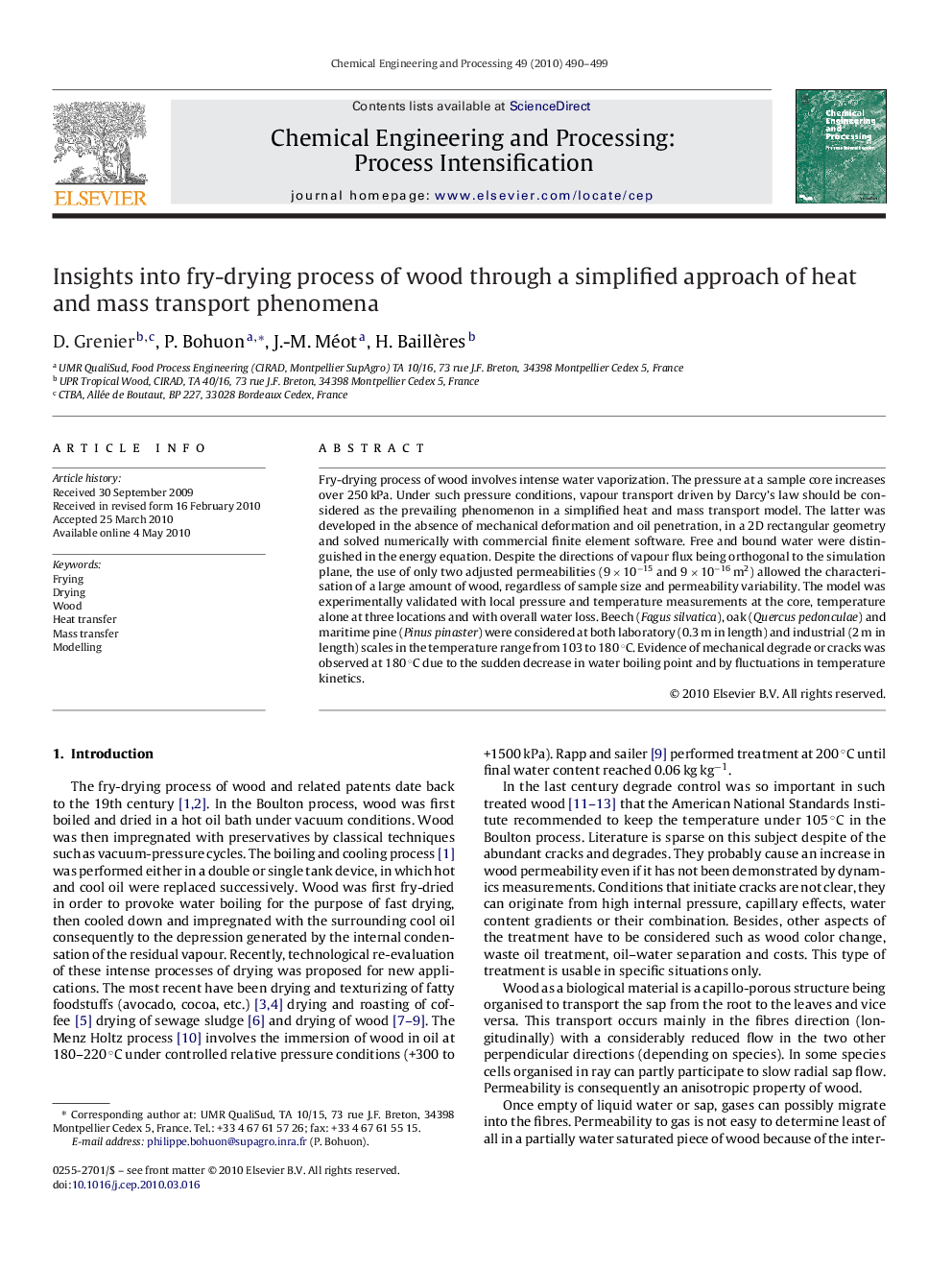| Article ID | Journal | Published Year | Pages | File Type |
|---|---|---|---|---|
| 687922 | Chemical Engineering and Processing: Process Intensification | 2010 | 10 Pages |
Fry-drying process of wood involves intense water vaporization. The pressure at a sample core increases over 250 kPa. Under such pressure conditions, vapour transport driven by Darcy's law should be considered as the prevailing phenomenon in a simplified heat and mass transport model. The latter was developed in the absence of mechanical deformation and oil penetration, in a 2D rectangular geometry and solved numerically with commercial finite element software. Free and bound water were distinguished in the energy equation. Despite the directions of vapour flux being orthogonal to the simulation plane, the use of only two adjusted permeabilities (9 × 10−15 and 9 × 10−16 m2) allowed the characterisation of a large amount of wood, regardless of sample size and permeability variability. The model was experimentally validated with local pressure and temperature measurements at the core, temperature alone at three locations and with overall water loss. Beech (Fagus silvatica), oak (Quercus pedonculae) and maritime pine (Pinus pinaster) were considered at both laboratory (0.3 m in length) and industrial (2 m in length) scales in the temperature range from 103 to 180 °C. Evidence of mechanical degrade or cracks was observed at 180 °C due to the sudden decrease in water boiling point and by fluctuations in temperature kinetics.
